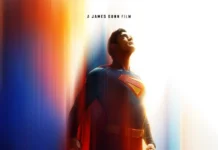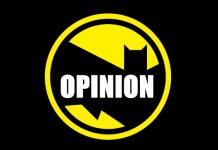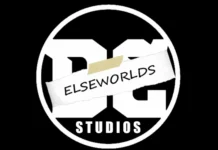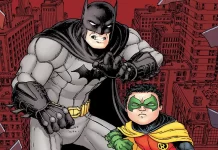UPDATE: I checked in with the world’s best comic book historian, Mr. Michael Uslan, and asked him to describe the difference between DC and Marvel in the comics, historically. He’s educated me before about it, but wanted to pick his brain again. Here’s what he had to say…
The Marvel Universe was created by one editor and principally one writer. That gave it a unified tone, set of rules, and interconnected books each month. So as a reader, we all knew within the Marvel Universe what was in outer space, under the ocean, or in New York City; whether permanently or from time to time. And they were all aimed at the same audience.
At DC, however, there were usually six or more editors, each of whom controlled specific characters and had their own little bullpens of their own writers and artists, all of which they guarded preciously. It was as if they had created fiefdoms with moats around them and alligators in the moats to ward off the other editors.
In the early Silver Age — except for primarily the crossover between Batman and Superman — there was little unified action. Even later, what was happening to Batman in BRAVE AND THE BOLD under Murray Boltinoff — had no bearing or relationship to what was happening that very same month to BATMAN under Julius Schwartz, or under Mort Weisinger in WORLD’S FINEST.
As an example, there was that day long ago when I bought an issue of ACTION COMICS and an issue of AQUAMAN both from DC.
The first had a story about Atlantis that was really aimed at 8 to 12-year-old kids at best, in which Superman was in love with a mermaid and Atlantis was a domed city under the sea filled with mermen and mermaids.
In AQUAMAN, Aquaman was the King of Atlantis and there were no mermaids or mermen, and there was no dome over the city. Nothing explains the situation more clearly than that.
As time went on, AQUAMAN was aimed at an older and older audience. The only merman that did not show up in Superman comics in that era was Ethel Merman. – Michael Uslan
When the Marvel Cinematic Universe became a success, many fans wondered why DC — or Warner Bros. Pictures, really — didn’t establish their own shared movie universe.
As we know, WB did in fact wonder why they didn’t have their own DC version of the MCU. Of course, they gave it an ill-fated go after 2013’s Superman movie, MAN ON STEEL, with BATMAN v SUPERMAN in 2016 — which underperformed at the box office and was reviewed poorly — followed by the disastrous JUSTICE LEAGUE the following year.
But even before JL hit theaters in November of 2017, Warner Bros. knew they had screwed the pooch and had decided to rethink how DC on film should be handled going forward.
The new way would be simply to make the best, filmmaker-driven DC films possible and not worry about an overt, shared movie universe where everything had to connect.
You know, kinda what a certain director told them to do when once he completed his trilogy of films featuring WB’s #1 DC IP.
A lot of fans will say that WB messed up because they didn’t do it the right way.
I agree with them.
But they’ll also argue that WB should’ve done what Disney/Marvel Films did and carefully craft a shared cinematic world with solo movies leading up to big team-up films.
That idea, I disagree with wholeheartedly.
Why? Because historically and at their very core, DC and Marvel are VERY different.
What we know as “DC Comics” started with Superman in 1938, followed by the creation of Batman in 1939, and subsequently, Wonder Woman in 1941. Yet none of DC’s Big 3 (or most DC characters) — the “DC Trinity” as they are usually called — crossed over into each other’s solo comic books. Hell, Batman and Superman didn’t share a comic book story until 1952 in SUPERMAN #76 — well over a decade after each first debuted and with both characters already hugely popular. Furthermore, there was no Justice League until 1960 when DC’s superteam first showed in in THE BRAVE AND THE BOLD #28.
With DC Comics, each character’s main gig, if you will, are their solo comic books and what they do within those individual titles rarely has any impact on other DC characters and the “DC Universe” as a whole, relatively speaking.
ALSO READ: BOF’s Everything About THE BATMAN Page
The Marvel Comics Universe was always meant to be an overtly shared world consisting of their superheroes and centered in New York City. Yes, DC and Marvel have superheroes in common, but they are indeed very different.
And now, Margot Robbie — who played Harley Quinn in SUICIDE SQUAD, BIRDS OF PREY, and the upcoming THE SUICIDE SQUAD for Warners, perfectly describes the difference between DC and Marvel when she was told of Harley’s demise (off-camera) in ZSJL.
I guess it’s kind of like the comics. The film version of the DC universe, I actually think they’re a lot like the comics. You pick up one comic and something’s happening and then you pick up the next comic and maybe that character’s not alive, maybe that character’s not with that person, maybe that character looks completely different. Each movie is its own sort of thing, and I think that works in the comic book world, and I think that works in the DC film world as well. It’s not like Marvel where everything is more obviously linked in a more linear way. It feels like there’s so many adjacent stories, worlds, and films happening at the same time, just like there are in the comics. So, yeah, I didn’t know that [Harley was dead in ZSJL], but it doesn’t necessarily change what other people are able to do with this universe, I don’t think. What one director decides I don’t think dictates what another director might be able to pick up and do with the world and the characters, which is fun. I think that’s an appealing aspect for directors in the DC world, they can make it their own, the way James [Gunn] did. He didn’t have to be beholden to the version that David Ayer set up [in SUICIDE SQUAD]. He could pick it up and make it his own, which I’m sure was more appealing for him.
Bingo.
A few exceptions aside, DC tends to work best on film when the movies are essentially their own thing in their own world and under the helm of a strong filmmaker.
We’ve already seen that approach be very successful with Christopher Nolan’s THE DARK KNIGHT TRILOGY from 2005-2012. The standalone JOKER from director Todd Phillips was a critical and box office hit. And of course, WB’s #1 DC IP — Batman — is returning solo to the big screen in Matt Reeves’ THE BATMAN in 2022 and will have nothing to do with any other DC proper — other than its own spinoffs on HBO Max (GCPD) and possibly on the big screen as well.
Yes, some films will still technically “connect” going forward, but movies like THE SUICIDE SQUAD, AQUAMAN 2, WONDER WOMAN 3, etc. will still pretty much be their own filmmaker-driven deal too. James Wan’s AQUAMAN, Patty Jenkins’ WONDER WOMAN 1984, and Cathy Yan’s BIRDS OF PREY (produced by Margot Robbie, of course) are all great examples. And even with Andy Muschietti’s THE FLASH establishing a “multiverse” and basically rebooting the “shared” part of DC on film, I don’t think it’s going to change.
Bottom line? Hire good filmmakers who have a vision and passion for these DC characters, let them do their thing without worrying about “continuity” and everything “connecting,” and the rest will take care of itself. – Bill “Jett” Ramey












